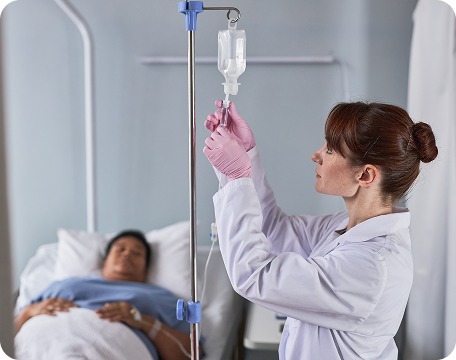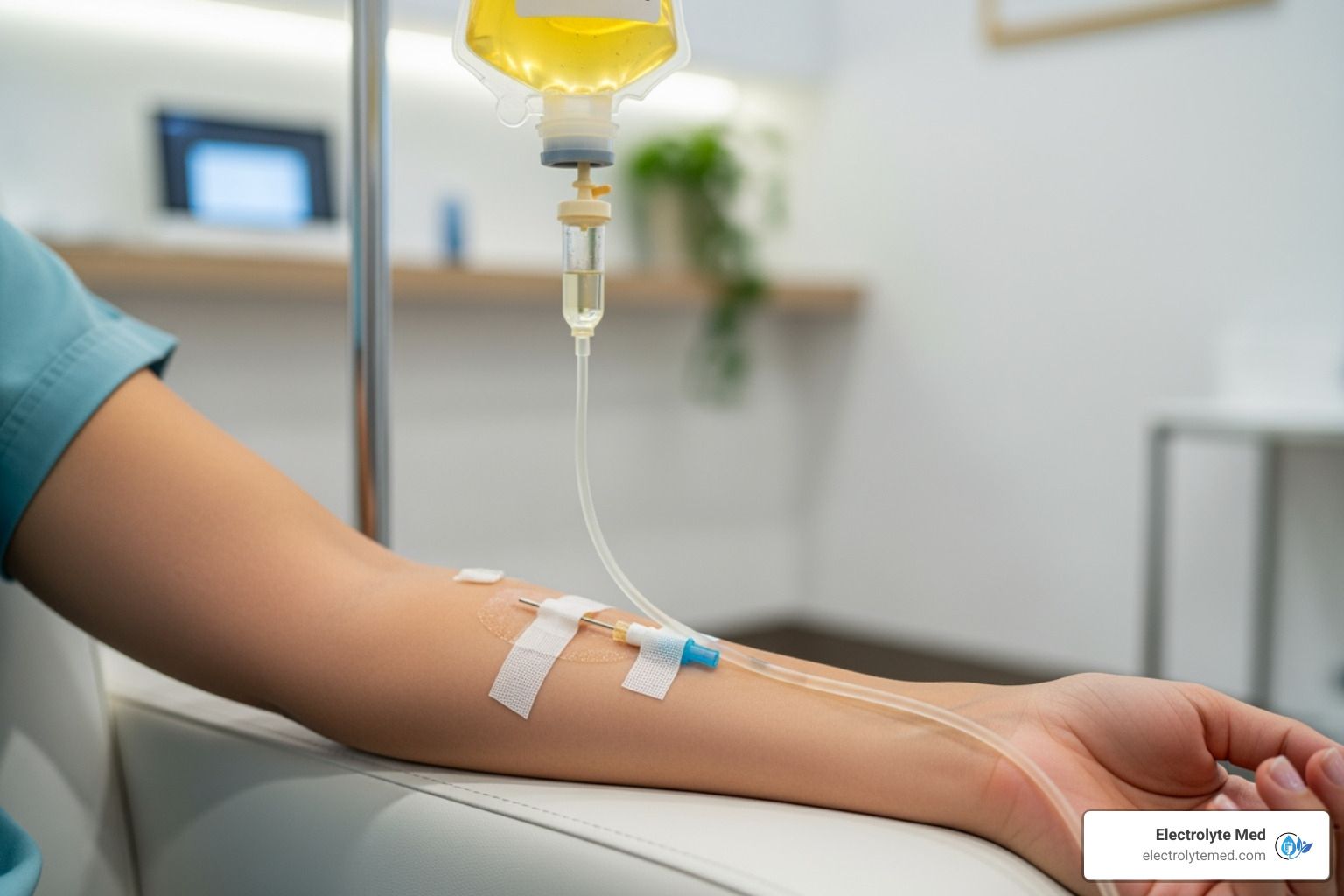The Keto Diet Dehydration and How IV Therapy Can Help
The keto diet has surged in popularity as a powerful approach to weight loss and improved metabolic health. By drastically reducing carbohydrate intake, the body enters a state of nutritional ketosis, where it burns fat for fuel instead of glucose. This powerful metabolic process can yield impressive results, but for many, the initial transition comes with an unwelcome side effect: dehydration and the infamous "keto flu."
Have you found yourself battling symptoms like headaches, fatigue, and muscle cramps in the first few days of starting the keto diet? This is a clear sign that your body is adjusting, and it often points to an underlying issue of dehydration and Electrolyte Imbalance. While the long-term benefits of the keto diet are appealing, managing this initial hurdle is crucial for staying on track.
The Science Behind Keto Flu
The "keto flu" is not a true viral illness; it's the body's physiological response to a significant dietary shift. When you cut back on carbohydrates, your body's primary fuel source, it starts to deplete its glycogen stores. Glycogen molecules are stored with a significant amount of water. For every gram of glycogen, approximately three to four grams of water are stored alongside it. As your body uses up these glycogen reserves, it releases all that associated water, leading to a rapid and often dramatic increase in urination. This is a primary reason why many people experience quick initial weight losson the keto diet—it's mostly water weight.
This rapid flushing of water, however, is a double-edged sword. It not only dehydrates you but also flushes out essential minerals known as electrolytes. Sodium, potassium, and magnesium are critical for a vast array of bodily functions, from nerve signaling and muscle contractions to regulating blood pressure. Without these minerals, your body can’t function optimally, and this is where the classic Symptoms of ketosis may arise.
A water tracking app can be a useful tool to monitor your fluid intake, but drinking plenty of water alone is often not enough to correct the electrolyte deficit. This is a common mistake for those new to the diet. The very nature of the keto diet means your body requires a more proactive approach to electrolyte management than on a traditional diet.
The Critical Role of Electrolytes on a Keto Diet
An Electrolyte Imbalance is the true culprit behind the discomfort of the "keto flu." Understanding the role of each key electrolyte is vital to combating these issues:
- Sodium: The most crucial electrolyte to watch on the keto diet. A low-carb diet naturally lowers insulin levels, which signals the kidneys to excrete more sodium and water. This is why many people on keto feel thirsty and have a low water intake. Without enough sodium, you may experience headaches, fatigue, and muscle cramps.
- Potassium: Essential for maintaining fluid balance and healthy muscle and nerve function. As sodium is excreted, potassium levels can also drop, leading to symptoms like heart palpitations and persistent fatigue. You can find potassium in electrolyte-rich foods like avocados and leafy greens, but supplements may be necessary.
- Magnesium: Involved in over 300 enzymatic reactions, magnesium is vital for energy production and muscle recovery. Magnesium deficiency can cause muscle spasms and cramps, which are common keto flu symptoms.
How IV Therapy Can Help

IV therapy is not a miracle cure, but it is a highly effective tool for managing the transitional phase of the keto diet. The direct intravenous infusion allows your body to quickly stabilize its electrolyte levels, which in turn helps to alleviate the common keto flu symptoms. This can help you stay committed to your weight loss goals and avoid the frustration that leads many to quit the diet.
Moreover, a complete wellness plan often includes more than just diet. By addressing dehydration and Electrolyte Imbalance with an IV, you can free up your body to focus on other aspects of health. The convenience of IV therapy on a comprehensive platform allows you to combine this treatment with other wellness practices. For example, some clinics offer hydration IVs that can be paired with discussions about improving sleeping habits, or even with new weight management treatments like GLP-1 meds.
It is important to understand that the keto diet is a unique lifestyle that requires a holistic approach to health. While the focus is often on carb restriction, long-term success is dependent on maintaining the body's delicate balance. The benefits of IV therapy extend beyond just the keto diet, offering support for a wide range of conditions and contributing to positive long-term health outcomes.
A Word of Caution and Professional Advice
While the keto diet has been used for over a century, originally for people with epilepsy, its popular application for general weight loss is relatively new. It is crucial to approach this diet with caution and to seek professional guidance. Always consult with a healthcare professional before starting the keto diet or any new treatment, including IV therapy. They can provide personalized medical advice and ensure the treatment is right for you. The Children's Hospital of Philadelphia also emphasizes the importance of fluid and electrolyte management for individuals on the ketogenic diet, particularly in medical settings.
Staying Hydrated Beyond the Drip
While an IV infusion can provide immediate relief, it is essential to build sustainable hydration habits to maintain healthy levels of ketones and prevent future issues.
- Drink More Water: Don't just drink when you're thirsty. Make a conscious effort to increase your daily water intake. Try carrying a reusable water bottle with you at all times.
- Try Infused Water: To make hydration more interesting, add slices of lemon, cucumber, or mint to your water for a flavorful boost. This is a great alternative to sugary sports drinks.
- Consider Broth: Bone broth is an excellent source of sodium, potassium, and other minerals, making it a perfect tool for replenishing electrolytes and staying hydrated.
- Consume Electrolyte-Rich Foods: Incorporate foods naturally high in electrolytes into your meals, such as avocados, spinach, mushrooms, and nuts. This is a great way to prevent Electrolyte Imbalance.
- Monitor Your Progress: To ensure you are in ketosis and that your diet is working for you, you can use a special home testing kit to monitor your blood ketone levels or a water tracking app to keep an eye on your hydration.
Conclusion: A Smarter Approach to the Keto Diet
The keto diet can be a transformative journey for weight loss and improved health. However, navigating the initial challenges of dehydration and Electrolyte Imbalance is key to success. By understanding the metabolic process behind the diet and proactively managing your hydration and electrolyte levels, you can avoid the frustrating symptoms of the "keto flu."
An IV drip offers a powerful and efficient solution for those moments when your body needs immediate replenishment. By bypassing the digestive system and delivering nutrients directly, it provides rapid relief, allowing you to stay focused and energized. Whether you're new to the diet or a seasoned veteran, prioritizing your hydration and electrolytes is the single most important factor for success. Don't let the keto flu derail your progress—empower yourself with knowledge and the right tools for a smoother, more effective journey toward your health goals.




